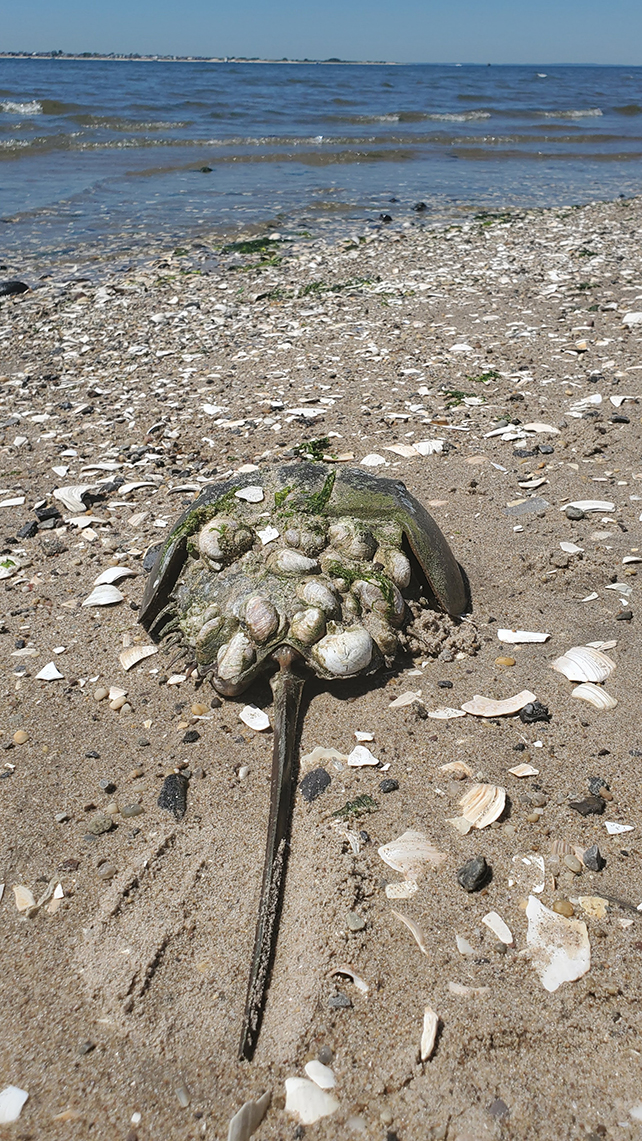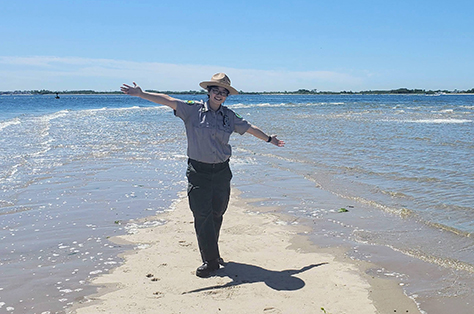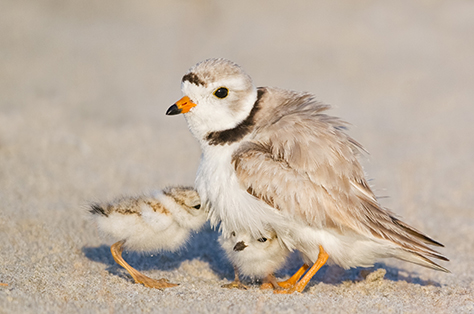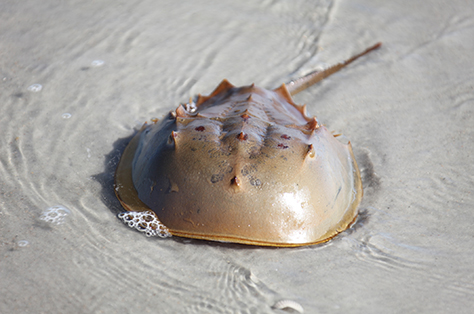Horseshoe Crabs in New York City Parks
Meet some of the most ancient-looking visitors to New York City!

Horseshoe crabs have been around for more than 300 million years – emerging even earlier than the dinosaurs! They visit the shores of New York City in late spring through early summer to mate and lay eggs. Learn more about horseshoe crabs, when they visit NYC, how we care for them, and what to do if you see one!
Horseshoe Crab Season in NYC
Each May and June, horseshoe crabs emerge from deep waters offshore and make their way up to our shorelines to mate and lay eggs. The crabs prefer breeding at nighttime during high tide within a few days of the full moon and new moon. A single female can lay over 100,000 eggs in a single season. After 2-4 weeks, the eggs hatch and larval horseshoe crabs head toward the water.
Where to See Them
Horseshoe crabs can be observed at many beaches and parks in NYC, including Plumb Beach, Gerritsen Beach, Kaiser Park, and Calvert Vaux Park in Brooklyn, Orchard Beach in the Bronx, Sunset Cove Park in Queens, and Conference House Park in Staten Island.
How to Spot a Horseshoe Crab
Horseshoe crabs have 10 eyes, six pairs of legs, a tail, and tough exoskeletons. And, although the word crab is in their name, they’re not actually crabs – they are more closely related to spiders and scorpions.
Shells
Their tough exoskeletons help protect them from predators like sharks, sea turtles, and gulls. Horseshoe crabs shed over a dozen times during their lives; so if you walk along beaches they love, you might find an old shell washed up on the shore!
Hitchhikers
Take a closer look at the shell — many small marine animals, like sponges, slipper shells, and barnacles, live on horseshoe crab shells as symbiotic hitchhikers.
Legs
Horseshoe crabs have six pairs of legs: five pairs are used for walking and swimming and one pair is used for eating. Females’ legs all look identical, while males have mitten-shaped front legs to hold on to the female for spawning.
Eyes
The better to see UV with! Horseshoe crabs have 10 eyes spread throughout their body. Unlike human eyes, some of horseshoe crabs’ eyes can detect UV light emitted by the sun and reflected by the moon, helping them track the lunar cycle and time when they come onshore for mating.
Tails
Horseshoe crabs’ long, pointy tails are not stingers. They use their tails to navigate and to flip themselves over if they get turned upside down.
Urban Park Ranger Demonstrates How to Flip a Horseshoe Crab
If you’re walking along the shore at low tide and see horseshoe crabs flipped over, it’s ok to flip them back – just don’t pick them up by the tail! Their tails are fragile and will not grow back if broken.
Diet and Importance to Wildlife
Horseshoe crabs primarily eat marine worms, mollusks, and small crustaceans. Horseshoe crab eggs are an important food source for birds, fish, sea turtles, and other wildlife.
Threats to Horseshoe Crabs
Horseshoe crabs are listed as vulnerable by the IUCN Red List of Threatened Species because of loss of habitat due to coastal development and pollution, and overharvesting by the pharmaceutical industry (scientists use horseshoe crabs’ blood for medical testing) and commercial fishery (fishermen use horseshoe crabs for bait).
What NYC Parks is Doing and How You Can Help
Researchers at NYC Parks and other organizations collect data each season on the crabs and the wildlife they support. Staff and volunteers tag horseshoe crabs, allowing us to track their mating frequency, migration patterns, and lifespans.
You, too, can help us care for horseshoe crabs:
Monitor and Track Horseshoe Crabs with Our Stewardship Team
Join the NYC Parks Stewardship team in May and June to help monitor and track horseshoe crabs – visit our Stewardship page for upcoming events. And if you find a tagged crab on your own, you can report the tag number at the US Fish and Wildlife Service website at fws.gov/crabtag.
Keep Beaches Safe and Clean
Properly dispose of trash and remove all fishing line fragments, hooks, and lures from parklands and waters. The discarded fishing line can entangle horseshoe crabs, birds, other wildlife, and even people, resulting in serious injuries.
Please Observe From a Distance
Unless you are flipping them over, observe them from a distance so you don’t disturb them as they lay eggs and look for mates.
Ready to Go Exploring?
May and June is the perfect time to see and learn about horseshoe crabs visiting our shores.
Horseshoe Crab Exploration
Join our Urban Park Rangers at the beach as we greet horseshoe crabs and learn more about these ancient creatures.
Wildlife in New York City
Explore more wildlife in our parks, including piping plovers visiting our beaches, and learn how we help care for them.
Stewardship
Beyond horseshoe crab monitoring, our Stewardship Team welcomes volunteers to help restore forested and wetland areas in parks.




